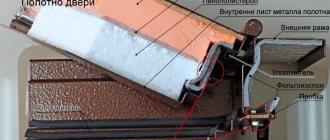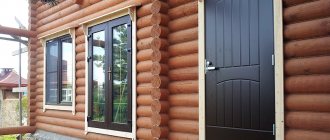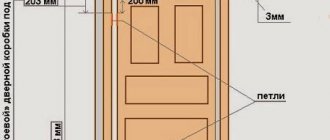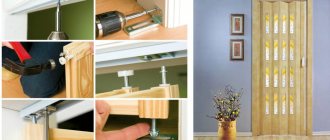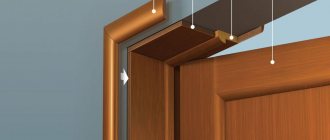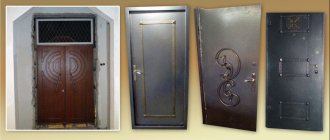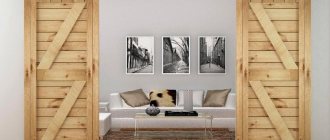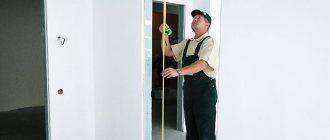Insulation of the door frame
Insulation of a metal entrance door should begin with the elements of the frame. If the box is made from a corner, then insulation is possible only in the places where the box adjoins the doorway. In this case, the gaps are filled with foam, and the excess insulation is cut off with a construction knife. If the box is made of a rectangular or square pipe, the insulation is placed inside the profile.
The better to insulate
To insulate the door frame, use foam or bulk insulation (sawdust, expanded clay).
Polyurethane foam is used to eliminate gaps between the frame and the doorway, as well as to fill the cavities of frame elements made from profiles.
Bulk insulation is used only for profiled frames. The profile is filled through a technological hole drilled in the upper part of the box. The diameter of the hole should allow the largest fractions of filler to pass through.
This method has a significant drawback: it is impossible to ensure that the entire internal space of the box is filled with bulk materials. As a result of uneven filling, voids are formed that freeze. Therefore, the use of bulk insulation is possible only in production conditions, when assembling the box in the workshop.
Materials and tools
To insulate the box you will need the following tools and materials:
- electric drill;
- metal drills with a diameter equal to the diameter of the nozzle of a cylinder with polyurethane foam;
- polyurethane foam;
- construction knife.
Insulation instructions
To fill the door frame with foam, you will need to prepare technological holes with a pitch of 500 mm. Through these holes, the internal space of the profile is filled with polyurethane foam. Excess foam coming out through the holes must be removed with a construction knife.
The gaps between the door frame and the doorway are cleaned of old insulation, moistened and filled with polyurethane foam. Excess foam is removed using a construction knife, after which the contact point between the box and the wall is masked with putty.
How to insulate a steel door with your own hands: FORUMHOUSE recommendations
The main purpose of a steel door is to protect your home from burglary. However, in addition to its main function - “guard”, a well-insulated metal door makes a significant contribution to the overall energy efficiency of the house. Heat loss through a drafty and freezing doorway, an uninsulated door and an ineffective ventilation system without a recuperator can reach up to 20%. Based on this, the importance of installing a reliable and high-quality steel door becomes clear. This article discusses how to insulate a metal door.
Why is there a vestibule at the entrance?
To make the entrance group energy efficient, you need to install two doors - an outdoor steel one that opens outwards, and a second one - an internal, simple wooden one that opens into the house. In this case, an air gap is formed between them, and air, as is known, is the best heat insulator. Such a tandem will keep the house warm, and will also protect the inner door from freezing and fogging in severe frosts.
However, homeowners do not always have the opportunity to equip a full-fledged vestibule.
Also, due to lack of funds, inexpensive doors that are not of high quality are often installed at the entrance area. Result: such a design and a metal frame freezes from the inside of the room in cold weather, until ice forms, and seeps through from the cracks between the door leaf and the frame.
Accordingly, the money spent on heating goes down the drain. The way out of this situation can be to independently insulate the metal door and, no less important, the door frame.
Step one - choose a seal
In any business, to obtain a high-quality result, you must first develop a plan. This thesis is especially relevant when carrying out construction work. Therefore, before taking on insulation, first of all we inspect the doorway. With a low-quality door, due to a loose seal between the door leaf and the frame, cold street air from outside enters the house.
Beer69FORUMHOUSE user
You should not chase the large thickness of the door and, accordingly, the size of the insulation layer inside it. The main thing in how to insulate a metal entrance door is the clear geometry of the “frame-door” assembly, which depends on the thickness of the leaf and stiffening ribs. Street frost passes to a greater extent through the junction unit (the gap between the leaf and the frame), and not through the door leaf. The best performance is achieved when installing a double box with two sealing circuits.
Even the number of locks and their locations affect the tightness of the fabric to the rubber seal. It is optimal when the door locks (2 pieces) are located slightly below and slightly above the middle of the door leaf.
From the point of view of frost resistance, the best type of lock device is a lock with a lever (pack of plates) type of mechanism.
PolinkaFORUMHOUSE user
On inexpensive doors, the wind often blows between the door leaf and the frame. To eliminate this, you need to lay a high-quality self-adhesive seal around the entire perimeter.
The main purpose of the seal is to seal the joint between the door and the door frame. This prevents frost, extraneous noise, dust and wind from entering the room.
If, as a result of examining the seal, it turns out that it does not fulfill its function: it is damaged, has lost its elasticity, or is laid incorrectly, then it must be replaced. Before you go to the store to buy a sealant, you need to:
- select seal material;
- determine the thickness of the seal;
- select the shape of the seal profile.
The seal can be made from:
- rubber;
- silicone;
- polyurethane;
- plastic;
- foam rubber.
Most often, rubber seals are used to seal the door-frame junction. They are characterized by durability, resistance to adverse weather conditions, and low cost. Silicone sealant has similar qualities. Polyurethane self-adhesive seals have become widespread due to their ease of installation.
It is not recommended to install a foam rubber seal on the entrance group: due to its low mechanical strength, it does not have a long service life.
It is also important to choose a seal of the required thickness and profile. To do this, you need to measure the size of the gap between the door leaf and the frame. As a guide, you can adhere to the following rules:
- If the gap does not exceed one to three mm, then you can choose a rectangular seal.
- If the gap is 3 mm, you can choose a seal with a C, K, or E-shaped profile.
- When the gap is from 3 to 5 mm, a seal with a P or V profile shape is used.
- If the gap is more than 5 mm, then a seal with profile shape O or D is installed.
If the seal is glued with silicone glue, then before applying the glue, the surface must be cleaned of the old seal and degreased. When gluing the seal, special attention must be paid to the corners, because When cutting the seal, gaps may remain in them.
Step two - insulate the door frame
Many novice developers believe that it is enough to buy and install a well-insulated metal door, and the entrance area will become energy efficient. Often overlooked is such a factor as the most powerful bridge of cold, which is a metal door frame.
Warm and dry FORUMHOUSE user
I “looked” at the door frame through a thermal imager and was surprised at how much it stood out in color against the general background of a well-insulated door. I had previously assumed that the metal froze strongly, but now I am convinced of how great the heat loss is in this unit. The box needs to be insulated. The only question is how to do it.
Recently, metal structures with thermal breaks have been gaining popularity. In this case, the inner and outer surfaces of the canvas and the box are separated from each other by a material with low thermal conductivity. As a result, the cold bridge is eliminated.
A similar method is an insulated concrete armored belt. This is described in detail in the article “Making an armored belt in a house made of aerated concrete.”
Using the principle of thermal break, you can modify the metal door frame of a cheap door. To do this, the metal (metal box) is insulated from the warm room. This can be done by installing an additional wooden frame and platband. As an option, first glue the contour of the metal box with a heat-insulating strip of isolon.
SergeiSt FORUMHOUSE user
The insulation inside a steel door is needed more for sound insulation than for thermal insulation. Therefore, in the fight for energy efficiency, it is necessary to close all metal parts of the door from inside a warm room. This is exactly what we do, closing and isolating the metal circuit (door frame) with a wooden panel with a rubber seal.
What such a knot looks like can be clearly seen in this figure.
Also, a wooden box, due to the texture of the wood, ennobles the entrance area.
In addition to the above-described method of how to insulate an iron door, an option for insulating a door frame is often proposed, such as foaming its internal cavity. To do this, holes are drilled around the perimeter of the steel frame, through which polyurethane foam is injected inside from a can. Let's conduct an experiment to understand whether this method is justified. Let's take any metal pipe, fill it and expose it to the cold. Let's leave it for a while and then touch the metal with our hand.
Polyurethane foam, when expanded, can lead to deformation of the door frame or stain the door leaf. You also need to remember that polyurethane foam can get into the deadbolt cavity and, when dry, jam the crossbars and damage the lock.
Andrey-AA FORUMHOUSE user
I decided to insulate the metal entrance door at the dacha by foaming the door frame with polyurethane foam. Foamed from the heart. As a result, foam got onto the crossbars through small cracks and froze. Trying to open the door, I first broke the key, then I decided to drill out the lock or even break the door open with a crowbar. Having calmed down somewhat and thought, I opened the box with a grinder and, sticking my hand in, pushed the bolts out with my fingers. The foam, which had not completely hardened, flowed out of the slot. In order not to spoil the canvas, I had to seal it with cellophane and construction tape. Then I waited for all the foam to dry so that it could be removed from the crossbar cavity with a chisel.
Conclusion: you need to be careful when foaming the box!
Andrey 203 FORUMHOUSE user
Foaming the box improves sound insulation to a greater extent than serves the purpose of insulation. This should only be done with the door open and then, before closing it, wait until the foam has completely hardened. After that, the holes for the crossbars need to be cleaned with a drill, or a narrow chisel or other tool.
Step three - insulate the door leaf
Having completed the previous two steps, we proceed directly to insulating the door structure. There are two options here:
- Internal insulation of the door cavity. Why does the door need to be removed and disassembled?
- If the door cannot be disassembled, then it will have to be insulated along the surface of the leaf.
In the first option, we do the following:
- We're filming.
- We dismantle the decorative panel.
- We insert foam plastic or extruded polystyrene foam into the cavities (between the stiffening ribs).
- We foam the cracks and install the decorative panel back.
- Let's put it in place.
It is best to insulate the door with extruded polystyrene foam, because... Unlike soft cotton insulation, it does not accumulate moisture and does not cake over time.
KeidFORUMHOUSE user
I myself insulated the iron door inside with polystyrene foam. The foam was covered on top with an additional sheet of MDF in the color I needed. It cost me 500 rubles. The door stopped rattling, became heavier, and its sound insulation improved. I will insulate the second door using the same principle.
A door insulated in this way can be covered with clapboard, artificial leather glued on, and finished with a brushed board. There is a wide scope for creativity here. You should not drill holes in the door leaf and try to foam it from the inside or pour granular foam into the cavity through these holes. If you insulate a metal entrance door blindly, such an upgrade can lead to jamming and failure of the locking mechanism.
If the metal door leaf cannot be carefully removed without destroying it (it is rolled), then the insulation will have to be mounted on top of the door.
WAADFORUMHOUSE user
In my opinion, even from a budget “Chinese” door you can make an option suitable for a summer house. Because It’s not removable, so I glued foam rubber “under the skin” on it, 1 cm thick, and painted it with spray paint. It turned out both warm and solid.
Sally FORUMHOUSE user
I also encountered a problem: how to insulate a non-demountable metal door. Cutting with a grinder is not an option, because... The inner fabric is a stiffener. And part of the locking mechanism is attached to it. After thinking, I realized how I could get out of this situation.
The forum member did this - first he drilled holes and carefully foamed the door frame, which ensured its 100% sealing and increased sound insulation. The outer part of the door was covered with advertising film. Then extruded polystyrene foam 2 cm thick was glued onto this film using liquid nails.
Sticking the film on the door will allow you to dismantle the insulation in the future without the time-consuming operation of removing glue from the door leaf. The film comes off easily if you heat it with an industrial hair dryer.
Also, as a temporary option, for emergencies or emergencies, you can temporarily “insulate” the entrance to the house in this way.
From the inside, in the doorway, a thick and heavy fabric is hung, which is folded to the side when leaving or entering the house. It should look like a curtain or curtain. The fabric is not hung close to the door, but at a short distance from it (5-10 cm). If the depth of the opening allows, then you can hang two curtains, also at a short distance from each other. It turns out to be a mini vestibule. Due to the air gap, heat from the house will not escape outside.
Read on our website the topic All about locks and doors, and how to make a metal door with your own hands. We invite you to read our review of a metal door with a thermal break. FORUMHOUSE also recommends finding out the answer to the question: how to independently install an interior door in a house or apartment, and reading an article on how to properly arrange a vestibule and entrance area in a country house. Watch the video, which shows the features of installing doors and windows in a house made of SIP panels.
Insulation of the technological gap
The source of heat loss is often a technological gap that appears when installing the door frame. Carrying out work only on insulating a metal door with your own hands, without eliminating heat leaks from the gap, will not bring the desired effect.
The better to insulate
The technological gap is usually 20-25 mm - this is the distance from the wall to the outer edge of the box. It is best to fill this gap with polyurethane foam.
In some cases, door installers immediately cover up the technological gap with an ordinary solution of cement and sand, but this option cannot be considered as insulation.
Cement is not an insulator, but on the contrary, it allows the cold to penetrate into the apartment. At the same time, due to uneven shrinkage, cracks may appear in the technological gap.
Materials and tools
To insulate the gap you will need the following materials and tools:
- polyurethane foam;
- scotch;
- polyethylene film;
- scissors;
- mounting gun (spraying foam using a standard nozzle will be inconvenient);
- construction knife.
Insulation instructions
Thermal insulation of the technological gap is carried out in the following sequence:
- From the side of the apartment, the platband is removed at the point of contact between the wall and the frame.
- From the inside, where the box adjoins the wall, a plastic film is attached using tape.
- Remove the casing from the outside.
- The outside of the technological gap must be moistened using a thin brush or spray bottle. A humidified environment will speed up the hardening reaction of the polyurethane foam.
- The foam container is installed in the mounting gun and shaken thoroughly.
- The first layer is applied with a thin tape. When squeezing out the foam, you need to make sure that the path is not interrupted.
- After the expansion of the first layer, after 20 minutes, they begin to apply the second layer, taking into account that during expansion the foam does not extend beyond the perimeter of the box.
- After the insulation has completely hardened, the protective film on the inside of the door is removed.
- The platbands are returned to their place.
If, when the insulation expands, part of the foam extends beyond the box, it is cut off with a construction knife.
Materials
Insulating doors is not as complicated a process as it might seem. First of all, you need to decide on a material that will provide the required level of thermal insulation in the hallway. This is not an easy task, because the market is saturated with numerous offers from manufacturers of products for finishing, repair and construction.
Insulation of a metal door is possible in several ways. Which one is best in this case is decided after reading all the instructions, evaluating all the pros and cons of the materials, their cost and availability, and ease of installation. It is recommended to listen to the advice of specialists.
Mineral and stone wool
Mineral and stone wool are commonly used insulation materials for doors. This is due to the properties of the materials, including low thermal conductivity. The advantages of mineral and stone wool include ease of installation. There are various modifications of materials of this type on the market, which can be divided into two categories:
- roll;
- slab.
You can use any, but slab ones are more convenient and easy to install. When laying them, a large amount of dust from small fibers is not released, as when using rolled mineral wool. But, regardless of the type, this thermal insulation for entrance doors has one drawback, which is its hygroscopicity.
At negative temperatures outside the room and positive temperatures inside, a metal door cools on the one hand and heats up on the other. This leads to the formation of condensation inside the casing. Drops of water flowing onto the mineral or stone wool sheets will moisten it. Wet insulation is not able to fully protect interior spaces from heat loss.
Due to the hygroscopicity of fibrous materials, it is recommended to place them between the door trim, pre-packed in plastic bags. This reduces the risk of the insulation getting wet.
Fibrous materials also have another drawback: over time, they tend to settle, forming voids. The entrance door is often opened and closed, which leads to a gradual displacement of the mineral or stone wool panels. This is an important drawback, because the insulation must fit tightly to the canvas.
Foam and polystyrene
There is no such thermal insulation material as polystyrene. Foam plastic is made from this substance, which can be used to insulate various structures and products. It is most often placed in the cavity between the sheathing in the manufacture of expensive entrance structures. This decision of the manufacturers is justified by the numerous advantages of polystyrene foam:
- Non-hygroscopic.
- Self-extinguishing ability (does not support combustion in the absence of a fire source).
- Low thermal conductivity.
- Durability.
- Ability to maintain shape throughout the entire period of operation.
Therefore, door insulation such as polystyrene foam is more popular than mineral or stone wool. But with all its advantages, it has its drawback - rigidity. For this reason, it is impossible to fill the door cavity with foam plastic so that there are no gaps between the insulation and the door leaf. But we can solve this issue with the help of polyurethane foam, which can eliminate the slightest cracks.
Izolon
Such a filler for entrance doors, such as isolon, is made on the basis of foamed polyethylene, consisting of many “cells” closed on all sides and filled with air. Single- or double-sided foiling is possible, which provides reflectivity.
A distinctive feature of isolon is that it itself has a low thermal conductivity coefficient, but is a thin material. Therefore, it is not able to provide complete protection of interior spaces from the penetration of cold air. Insulating a door with isolon is possible when it is laid in multiple layers.
Foam rubber
The retail chain offers a wide range of materials that have better thermal insulation properties than foam rubber. But this material is available and has a low price. In this regard, it is not difficult to find a canvas of the right size. However, insulating an iron door with foam rubber is no longer as popular as it used to be. This material can be used if there is no other option. It should be noted that over time, foam rubber begins to crumble, which will require its replacement with another, better material.
Polyurethane foam
Polyurethane foam is a high-density foam, therefore it has the best thermal insulation qualities. Insulation of metal doors with these materials is carried out in the same way.
If the canvas is factory-made, it can only be insulated by first disassembling the casing. If the door is a sheet of metal, reinforced on one side with stiffening ribs, polyurethane foam or polystyrene foam is glued to the door from the room side. Then fill the cracks with polyurethane foam. The next step is to cover the entrance structure with a suitable material: OSB, moisture-resistant plywood, metal.
Insulation of the vestibule
If it blows at the point of contact of the door leaf with the frame, you will need to insulate the vestibule. Drafts can occur when the edge of the canvas does not fit tightly to the jamb due to deviations from the specified dimensions.
The better to insulate
The insulation of the vestibule is carried out by gluing the inside of the door leaf adjacent to the jamb with special self-adhesive tapes with different sections.
Most often, tape with a round or oval cross-section is used, but for gaps over 3 mm in size, it is recommended to use a sealant with a cross-section in the shape of the letter P.
Materials and tools
To insulate an iron door around the perimeter of the vestibule, you will need the following materials and tools:
- tape insulation of the required section;
- liquid solvent for degreasing the surface;
- scissors.
Insulation instructions
Before you start gluing the tape insulation, you need to degrease the metal surface, for which you use a liquid solvent and a piece of foam rubber.
Tape insulation is glued along the entire height of the door leaf, 3-5 mm away from the outer edge. When installing insulation, it should be pressed firmly against the surface of the door leaf to obtain a reliable connection.
It is not recommended to tighten the seal during installation, since tension will not allow obtaining high-quality gluing of surfaces.
Solid door insulation technology
There are several ways to increase the thermal insulation properties of a one-piece door:
- internal filling with liquid insulation is an excellent option, but keep in mind that if the seams are not sealed, this material will be on the outside. The appearance of the door will deteriorate a little, and in this case it is impossible to guarantee the absence of voids inside. There is nothing complicated - just the internal cavity is filled with material;
- a one-piece door can be insulated by attaching insulation to the surface of the body on the inside. Of course, the appearance of the door from the inside will change; it will become many times thicker, but also warmer.
How to insulate a door if it faces the street
In private houses or country houses, there is also a need to insulate an iron street door. Considering that the door is constantly exposed to weather changes and seasonal changes, it is necessary to take a responsible approach to the material that will be used inside the door leaf.
The following materials are suitable insulation for a street door:
- expanded polystyrene;
- Styrofoam;
- expanded clay
These materials have minimal hygroscopicity, so changes in temperature and humidity will not affect their thermal insulation properties.
The process of insulating street metal doors is no different from the process of working with apartment doors.
Choosing a metal door with insulation
Whether you live in an apartment or a house, in any case, your home requires a reliable entrance door. This can be an inexpensive Chinese-made iron door, or an armored sheet with fireproof and bulletproof layers; the main thing is to choose a model whose cavities are filled with insulation. At the same time, it is extremely important to ask in advance what kind of thermal insulation is contained inside the sash, since very often honeycomb cardboard is used as insulation. The strength of this material is high to the same extent as its thermal conductivity. Very often, the internal filling of a steel door is made of thin foam plastic, which also does not contribute to high-quality insulation.
Basalt thermal insulation is considered the best option today. Of course, if the placement inside the sash is poor, the mineral fiber will settle over time under its own weight. But professionally made metal doors with such a filler, fixed over the entire area using horizontal ribs, will serve for a long time without the formation of freezing areas. There are also models with sawdust filling the internal cavity between the metal sheets. This solution significantly reduces the thermal conductivity of the street door.
But most often you have to buy budget options, with no insulation at all, and also without an internal panel, or upholstered on the inside with tightly fitted boards or timber. In this case, you need to look for options on how to insulate the metal entrance door yourself. Foam rubber can be used as a material to fill the space between the stiffeners, which is best used in combination with batting, as well as polyurethane foam or, in extreme cases, polystyrene foam
. Thermal insulation can be done both inside and outside.
How is the front door constructed?
The answer to this question depends on the model, but most designs have a certain set of elements. These include:
- rectangular frame;
- metal sheets;
- stiffening ribs located inside;
- thermal insulation material;
- finishing (wood, leather, laminate);
- mortise locks, hinges;
- other accessories - handles, peephole.
In budget entrance structures, stiffeners and insulation are not provided. Expensive models have not two, but three loops. The thickness of the metal sheets in them is greater; either foam plastic or mineral wool acts as thermal insulation.
Regarding the cracks
Foam sealing tape
The last stage in the process of insulating the door can be called gluing a rubber or foam seal around the entire perimeter of the entrance group (at the joints). Rubber seal is the most popular and preferred material, as it has a high level of wear resistance.
To eliminate cracks, you need to buy the thinnest seal, so that in the future you will not have problems closing the front door.
Rubber sealing strip
The price of insulation is not high. According to rough estimates (even if you buy the most expensive insulation and not the cheapest one), you will have to spend no more than 2,500 rubles.
Attention! To preserve the maximum amount of heat in the apartment, many of our fellow citizens, in addition to insulating the front door, install a second, additional door (usually made of wood).
Why does the door freeze?
Due to the constant exposure of metal surfaces to moisture and temperature changes, the condition of the front door parts changes. The freezing process is expressed in the swelling of the canvas, peeling of the edges, and swelling of decorative panels (veneer, laminate). Destruction processes also occur with framing elements - frames, slopes, platbands.
Freezing of the door occurs due to the structural features of the structure. A door is a door leaf, frame, handles and other fittings, and each of these elements contains cold bridges. Most often, the door freezes under the influence of the following factors:
- temperature differences and climatic changes, as a result of which condensation, frost,
- high thermal conductivity of iron, which quickly loses heat and lets in cold,
- shrinkage of insulation or its absence in the structure,
- minimum door leaf thickness,
- gaps, cracks, cracks in the opening structure,
- poor quality sealing of joints,
- deformation of the doorway.
Heat loss can be minimized by isolating existing cold bridges. So, under the wooden door trim you can lay a foamed polyethylene gasket. Factory insulation in the form of cotton wool is easily replaced with sheet materials - polystyrene foam or polyurethane foam. You can also insulate the handle: in this case, a layer of dense polyethylene is placed under it. But in most cases, insulation requires a more careful approach.
Methods of insulation in an apartment or private house
There are several methods of insulation. Which one to choose depends on the type of structure and its location. Doors facing the street need more thermal insulation, and drafts will require the installation of a second panel.
Along the perimeter of the opening: sealing cracks in the door frame
For this installation method, you will need a sealant that is glued to the sealant or adhesive layer. To seal cracks in the door frame, you can use different types of sealant:
- Foam rubber is the most fragile of all. This material will last no longer than one season.
- Rubber - mounted on a rubber layer and has good operating characteristics.
- PVC - withstands temperature changes well and comes in various shapes. To install this material, you will need to make a groove in the doorway and use a screwdriver to push the PVC tape into it.
- Rubber is a fairly elastic and frost-resistant material.
The more elastic the seal, the more tightly it will be placed in the space of the doorway, ensuring that it is not blown through.
To measure the size of the seal, take regular plasticine, wrap it in a bag and place it in one of the cracks, and then close the door. You will receive a cast from which you can easily select the material of the desired configuration.
There are two ways to glue the tape:
- if the product is self-adhesive , then before gluing, degrease the door frame, remove the protective film and secure the seal from bottom to top;
- if there is no sticky base , use liquid nails or silicone sealant.
Upholstery
Insulation of the door leaf itself is especially important for metal structures. The procedure is as follows:
- We remove the canvas from the hinges, remove the removable fittings (handles, lock).
- We fasten the insulation with a furniture stapler every 15 cm.
- Upholstery with decorative material, secured with decorative nails.
- We return the canvas to its original place.
Don't forget to leave 5 cm of upholstery material for the hem. For upholstery use:
- skin;
- foam;
- bologna or leatherette.
The material is attached with liquid nails, starting from the top.
You can insulate in another way:
- We attach wooden slats along the edges of the canvas;
- We lay a layer of foam plastic between the slats;
- We decorate the structure with plastic or fiberboard.
Threshold
The threshold protrusion performs several tasks at once:
- closes cracks at the bottom of the door;
- provides thermal insulation;
- prevents the formation of condensation.
You can insulate the threshold in two ways:
- If the protrusion is made of plastic, use polyurethane foam. The structure is removed, the assembly seam is cleared of debris and filled with foam in several layers, then returned to its place.
- Installing a thermal damper. With this method, the threshold is also dismantled, and a heating cable is laid in its place. To control the mechanism, the thermostat is taken outside, and at the end of the procedure the threshold is set back.
Possible problems after dismantling
It often happens that after assembling the structure and installing it in its rightful place, some problems appear. The most common mistakes need to be considered.
- The locks are too tight. When reinstalling them, it is necessary to provide the necessary clearance to the crossbars. It is needed to prevent problems with the lock if the door sags a little over time.
- Door not closing tightly. This situation can be created by installing a new seal or incorrect placement of the tongue. In the first case, over time the problem will disappear on its own; in the second, you will have to adjust the element.
- The appearance of a squeak. This symptom indicates sagging of the fabric or loose loops. Troubleshooting - tightening hinges, lubricating parts.
- Distortions of the canvas. In this case, new dismantling will be required, since some errors were made during installation.
The main duty of any entrance door is protection from the entry of strangers, from noise and cold. To ensure long-term operation, regular maintenance of the structure and timely repairs are necessary. In this case, there are two ways: inviting a specialist or working independently. In order not to encounter problems, or to be able to successfully eliminate them, you need to carefully study all the elements of the front door and the conditions for their flawless functioning.
To learn and understand how to disassemble the front door yourself, and in what order to do it, it is better to watch this educational video:

